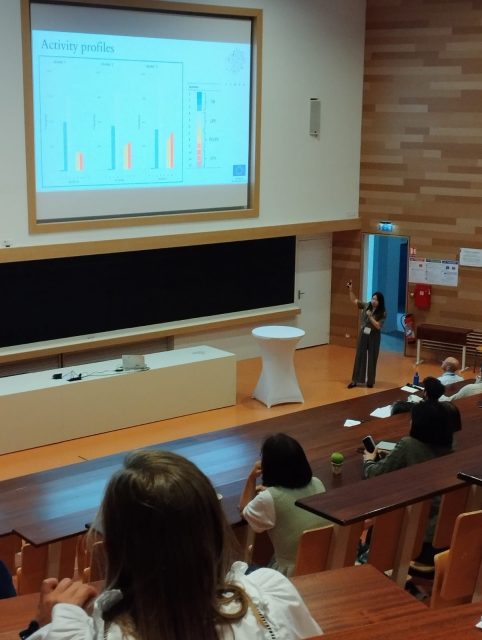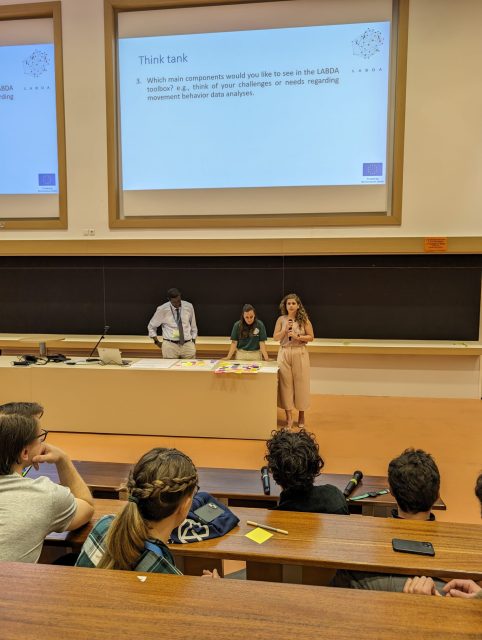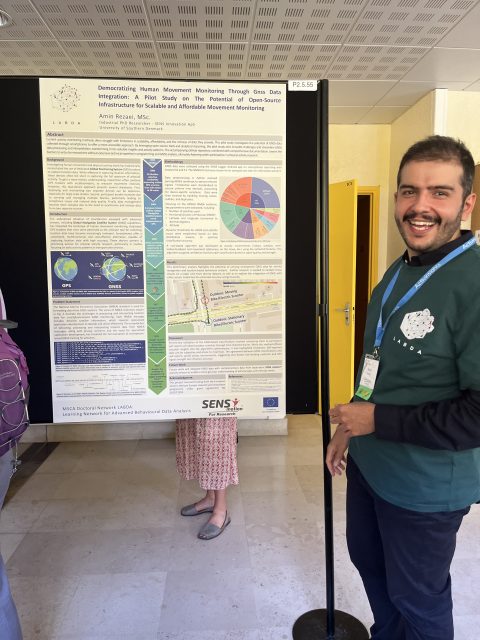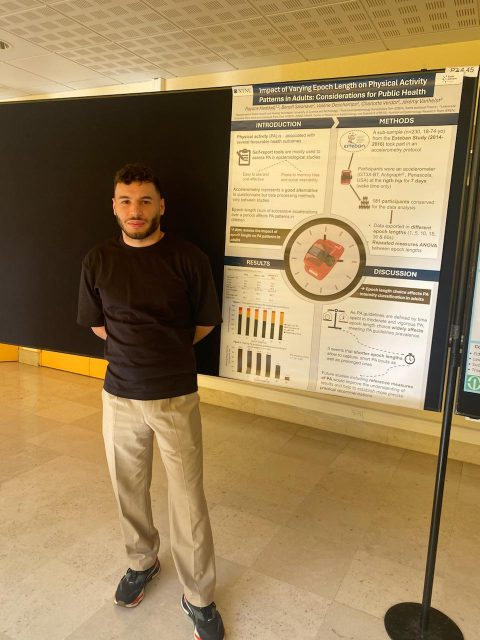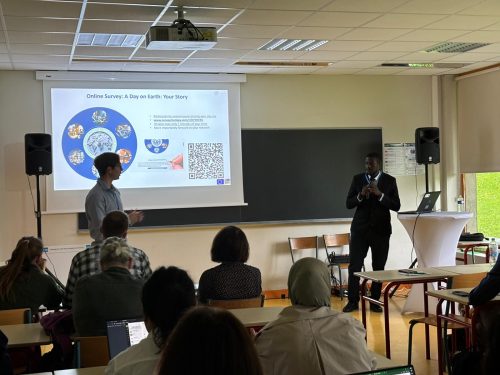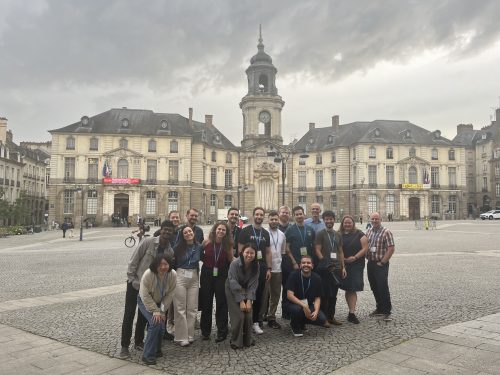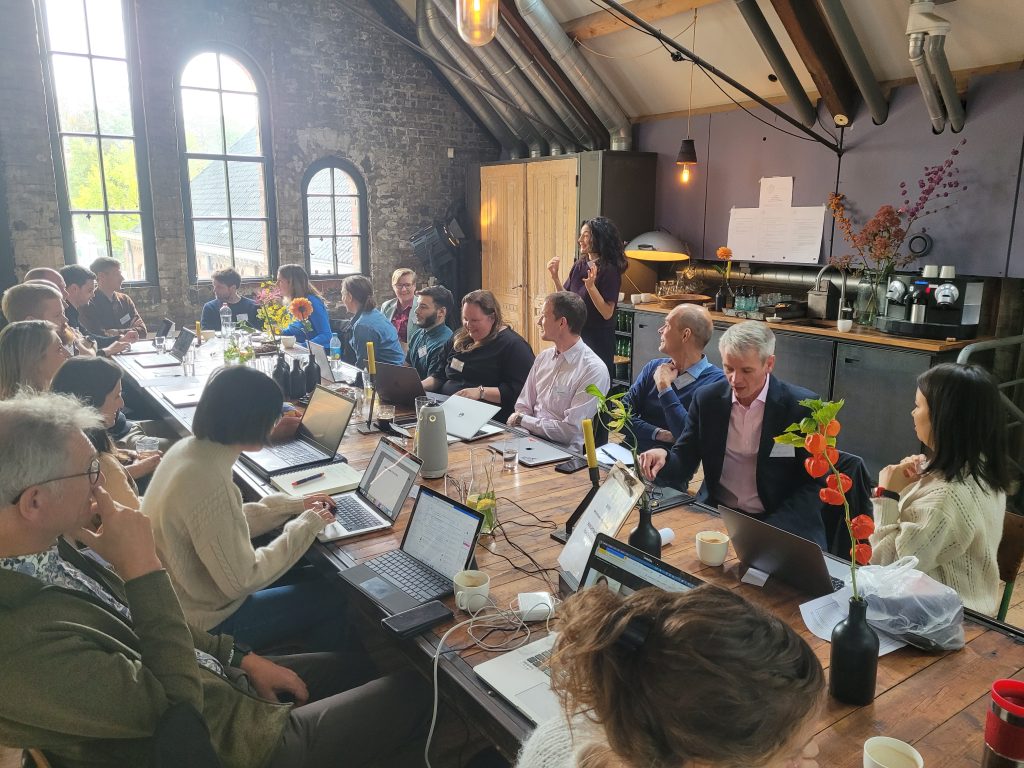When: 17-21 June 2024
Where: Rennes, France
The LABDA consortium recently attended the 2024 ICAMPAM Conference in Rennes, where many LABDA fellows presented multiple insights from their research studies. It was a great learning experience for the fellows and a valuable networking opportunity for the entire LABDA consortium. ICAMPAM is the bi-annual conference of the International Society for the Measurement of Physical Behaviour (ISMPB), and it is an excellent venue for the LABDA consortium to share our research. Indeed, LABDA was present in multiple sessions within the conference, providing a significant opportunity to present our studies and connect with researchers worldwide who gathered in Rennes.
The conference started with a day of engaging workshops and symposia, including a panel discussion with Fiona Bull of the WHO aiming to forge a path towards a consensus protocol for the WHO’s global population physical activity surveillance efforts. LABDA PI Alex Rowlands (University of Leicester) was among the panellists.
On the second day, we had three insightful oral presentations and one poster presentation from fellows Josef Heidler (Southern Denmark University), Usman Sani Dankoly (Glasgow Caledonian University), Xin Zheng (Amsterdam UMC), and Marian Paiva Marchiori (University of Southern Denmark), along with an invited talk from one of our PIs, Severine Sabia (Inserm). Josef explained the Python package he’s developing to merge GIS and GPS data with accelerometer data to add more context. Marian presented her framework for guiding researchers in choosing the most suitable visualization tool for effective communication of movement behaviour data. Xin explained her work on temporal data analysis of physical behaviour and its association with health indicators. Usman presented his approach to using AI to better understand daily human behaviour, and Severine presented her research on the determinants and impacts of physical activity and sedentary behaviour on cardiovascular disease and mortality in old age.
The first day ended with great participation by LABDA members and was a successful icebreaker!
The following day also saw significant participation from the LABDA consortium. The third day was bookended by keynote lectures from Kerstin Bach (Norwegian University of Science and Technology) and Jasper Schipperijn (University of Southern Denmark), both LABDA PIs. Kerstin discussed balancing knowledge and data for effective human recognition and the use of machine learning in the field of accelerometer-measured movement behaviours. Jasper talked about assessing the context of physical activity behaviours by adding geographical location data to accelerometery, providing a more detailed understanding of physical activity patterns. LABDA fellow Rayane Haddadj (Norwegian University of Science and Technology) also presented his poster on the impact of varying epoch lengths on physical activity patterns in adults. The third day, too, was a success!
On the last day of the conference, the LABDA consortium once again played a significant role, hosting a symposium session about applying an intersectionality lens to physical activity research. The symposium session was moderated by Jasper Schipperijn and featured talks by three LABDA fellows: Usman Sani Dankoly, Marian Paiva Marchiori, and Gaia Segantin (Amsterdam UMC), as well as the LABDA coordinator Mai Chin A Paw (Amsterdam UMC). Mai set the stage by emphasizing the importance of intersectionality in behavioural data analysis. Traditional public health approaches often overlook the complex interplay of factors such as gender, age, ethnicity, and socio-economic position, even though the importance of considering the role that social identities play in behaviour and access to a healthy lifestyle is widely accepted. LABDA’s novel approach tailors’ algorithms to these specific intersections, moving beyond generalized movement guidelines to address the unique behavioural patterns and health outcomes of socially diverse populations.
The symposium also tackled topics of movement behaviour taxonomy and the LABDA toolbox. Usman presented LABDA’s work on the development of a universal taxonomy of 24-hour movement behaviour and the incorporation of intersectionality within the taxonomy. This innovative taxonomy aims to reconcile universality with intersectionality by deriving activity nomenclature from daily life narratives, ensuring inclusivity and reflecting real-life experiences across diverse intersectional backgrounds. Marian and Gaia introduced the open-source LABDA toolbox to guide users in optimal methods for wearable data analysis. This toolbox aims to standardize data collection and movement behaviour classification, incorporating intersectionality to address the diverse needs of different communities. To gather insightful feedback from potential users of the toolbox, the fellows organized a stakeholder engagement session where the audience was invited to provide their feedback on what they think a toolbox on behavioural data analysis should address and contain. One frequently mentioned element within the responses was the creation of frameworks and protocols for standardization of methods and data preparation.
The symposium was an interactive workshop, and the LABDA consortium gained useful inputs, aiding the possible co-design of the toolbox with potential end-users and interested stakeholders.
On the same day, three more LABDA fellows presented their work in the format of two posters and an oral presentation: Henrik Eckmann (University of Leicester), Amin Rezaei (SENS Motion), and Mari Sone (Amsterdam UMC). Henrik’s poster, titled “Facilitating Use of the Intensity Gradient Across Commonly Derived Accelerometer Activity Metrics,” focused on adapting the intensity gradient for use across commonly derived epoch-level accelerometer metrics and examined the comparability between the derived intensity gradients. Amin’s poster, titled “Democratizing Human Movement Monitoring Through GNSS Data Integration,” covered his pioneering pilot study on the potential of integrating Global Navigation Satellite System (GNSS) data with open-source infrastructure to monitor human movement, exploring the feasibility of creating scalable and affordable movement monitoring systems. Mari gave an oral presentation on “An Intersectional Approach to Physical Behaviour Pattern Analysis,” explaining how the sequence mapping method can be a valuable tool to explore how gender, ethnicity, and parental education could influence physical activity patterns. This intersectional approach could reveal how diverse backgrounds shape health behaviours and outcomes.
Finally, Alex Rowlands and Philippa Dall (Glasgow Caledonian University), both PIs of the LABDA consortium, presented their research. Alex presented a study based on data from nearly 12,000 UK Biobank participants, showing that while the volume and absolute intensity of physical activity drop with age, relative intensity stays stable. Philippa introduced a screening tool to identify measures of habitual physical activity for use in systematic reviews. This tool, part of the OPTIMA study, captures all aspects of daily physical activity through self-reports and devices, helping to understand behaviour-change interventions.
#LABDA
#ICAMPAM2024
#MSCA
#HORIZON-TMA-MSCA-DN
Share this post: on Twitter on Facebook on LinkedIn

